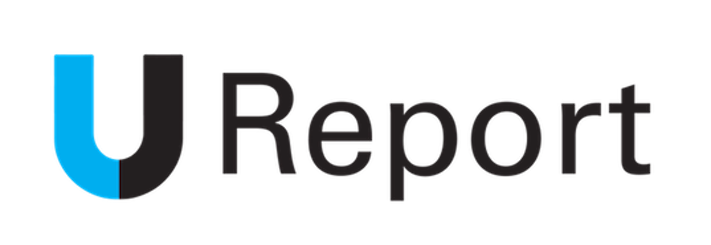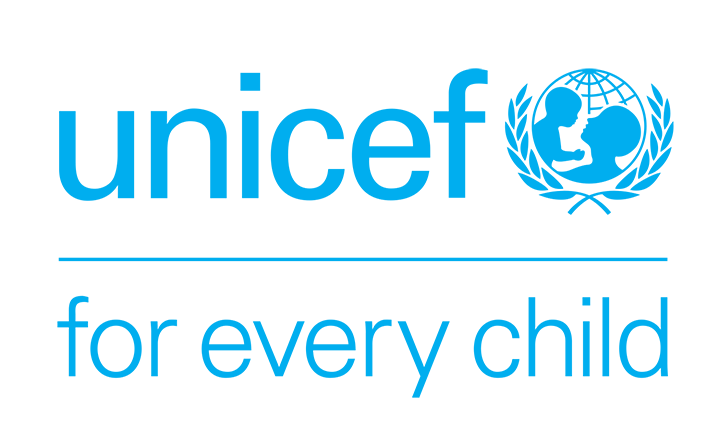UNICEF over the years have increasingly invested in exploring the use of information communication technologies across all work areas. U-report is one of such incredible tools that sustains growing feedback processes for humanitarian response in varying degrees of community needs.
By Fatou Wurie and Miriam Obibi
It is August 2019 and rainy season in Nigeria. The Borno camp has pools of water scattered around, and children are kicking at the water. Their laughter ripples through the air. Community volunteers and mobilizers are seated under a tent next to the camp clinic. Their phones are pulled out as they wait to voice their experiences of using SMS – text messaging – to exchange information with UNICEF and partners, sending and receiving messages through U-Report. The first person to speak is a father of two children and an active community volunteer for U-Report. He shows his phone and says, “this program helps me get involved with the clinic. I made sure my wife, when she was pregnant, made all her visits. When the latrines were filled up, I reported it on text, and a couple of days later it was fixed. That’s when I know more people need to join”. Everyone claps for him, and he peers at the group, and continues “yes, we should all join because through this texting, we can make our community better”. Everyone cheers again. It sounds ideal, it sounds like there is a solution. Yet, it is far from the truth. We are only at the beginning.
UNICEF over the years has increasingly invested in exploring the use of information communication technologies across all work areas. Investments in digital tools like U-Report, a global messaging platform, has yielded results with the platform now boasting of over 12 Million (and growing) U-Reporters globally, in 75 countries with a new user signing-on every 5 seconds. As U-Report continues to evolve in technical sophistication, so has its ability to be leveraged for the humanitarian sector’s call for a more coherent approach to information sharing and collecting; influencing and measuring of social and behavioral change with the purpose of using people-led information to inform humanitarian decision-making processes and adhere to systems of accountability.
In 2018 a team of UNICEF collaborators piloted U-Report to support humanitarian efforts in North-East Nigeria’s protracted crisis. In areas across the three North Eastern states where the program was piloted, internally displaced peoples who are connected through mobile phones are targeted. U-Report would act as a platform to reach and engage them in a two-way dialogue about their ongoing needs. The goal was to stretch as far as telecommunications connectivity reaches people, and to remove burdens of SMS costs to the users as well as complement the use of a physical feedback box, one of the traditional ways of engaging with the affected population. If people could text, the assumption was that they would be more open and more frank in their feedback and expression. The feedback from affected communities was meant to directly shape ‘how’ humanitarian actors respond, and in the process, commit to closing that feedback loop by communicating with communities on what was done or could not be done. The aim was to keep an on-going dialogue, with affected peoples leading the way, and humanitarian actors being held accountable for our commitments to those affected.
In Adamawa, one of the states were in U-Report was piloted, 30 women gather at the center of the hospital’s courtyard. This time it is hot, and the sun is unrelenting. The canopy acts as a shade and everyone is chatting. No men are in sight, and the women relax their scarves. A young woman speaks first, “the last message I received about violence really spoke to me. I responded to the text saying that, YES, violence is increasing in our community and I want to do something about it. I want everyone to do something about it. It isn’t safe for our children, for us”. Others begin to echo similar sentiments. A young mother follows, lifting her baby she stands up “For me, the information helps me be a better mother. I started boiling my water before giving it to my children. Now, we do it all the time for everyone. But also, I share with other mothers who don’t have phones or don’t know about this program. I just share what I know has worked for me, what is important”. The others around her nod in agreement. What follow are hours of discussions about all the issues that matter to them, from information that directly influences their behavior to structural issues like high levels of violence against girls and women. The women are articulate about what actions are needed from them. What is needed from community leaders, from humanitarian actors – from everyone. They are defining the way forward.
Two years on since launching U-Report in North-East Nigeria, many lessons were learned, and components of the model deployed in 10 other countries including Indonesia, Mozambique, Malawi, Zimbabwe and Bangladesh.
Lesson 1: Setting up reporting channels isn’t enough – the reporting tool must make sense to affected communities
U-Report was rapidly deployed to share life-saving information and solicit feedback during the 2018/19 earthquake and tsunami crisis in Indonesia. U-Report was also re-designed to track water distribution points in Palu and when packages were distributed, QR sticker codes were placed on the packages to enable communities to provide feedback on the resources received. Although there was a low uptake use of the stickers, a key lesson learned was the need to better engage communities on reporting channels by working more intimately with local actors and community mobilizers.
Lesson 2: Transformation hinges on trust, this means close the Feedback loop
Incoming feedback from U-Report users in North-East Nigeria is taken with the determination for actionable change and to shape the ongoing humanitarian response. In Adamawa state, when the only Primary Healthcare center was closed in a small community, due to its poor conditions, concerned community members reported it. The incoming reports were collated and shared with government officials and partners. This resulted in government putting in place adequate measures to rehabilitate the healthcare facility. When reports and complaints are received, they are referred for action through U-Report's case management tool. A case is not closed until it is actioned and can be reported back to those raising the issue. This is crucial for trust building; people need to see how their voices are bringing about action and holding both government and humanitarian actors to account.
Lesson 3: Investing in preparedness is important for a strong people-centered response
Bangladesh is a good example of identifying areas to support government-led disaster preparedness programming. The post-Cyclone Fani needs assessments highlighted the need to invest in preparedness processes with a clear indication that U-Report could support government efforts through its real-time capability (speed) as well as its featured integration across all major social media platforms.
It becomes increasingly clear that looking ahead, we should deepen our commitment to responsibly share power with the communities we, humanitarian actors, serve. This means we must continue to invest in strengthening the linkages between digital and analog community engagement mechanism. We must continue to interrogate and invest in building more holistic and integrated systems for continued dialogue between affected communities and humanitarian actors. Where SMS cannot go, how do we ensure that face-to-face engagement, radio and other traditional methods of information dissemination and community engagement processes fed into a data system that is responsive. When we cannot reach women and girls, how do we innovate and invest in digital (and non-digital) platforms that are inclusive and safe for women and girls. The questions are many, and so are the opportunities.
Lesson 4: Bridging the digital and non-digital worlds require deliberate investment
During Cyclone Idai in Mozambique, Malawi and Zimbabwe, U-Report was used to rapidly disseminate life-saving information and incoming data from U-Report was used to inform government response.
In Mozambique, social mobilizers were given 7-questions to ask affected communities through a face-to-face engagement, responses were then uploaded on to U-Report, collated, analyzed and shared with UNICEF partners to support a coordinated inter-agency response. The approach of linking offline engagement to digital for rapid analysis enabled reach to some of the more vulnerable communities, yet proper inputs of the information received from communities and people’s willingness to respond to the questions proved challenging. It is time to stop only highlighting the digital divide, rather it is time to act on bridging the divide which includes recognizing that both analog and digital as standalone solutions aren’t enough. There lies a real opportunity compliment both methodologies in a way that is context relevant and locally driven.








